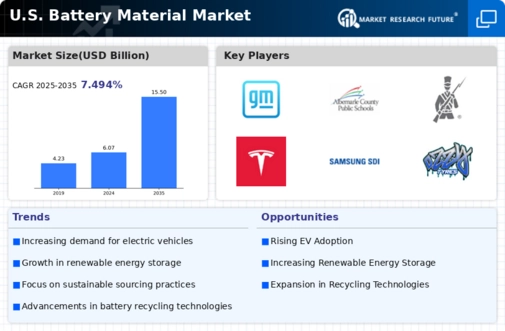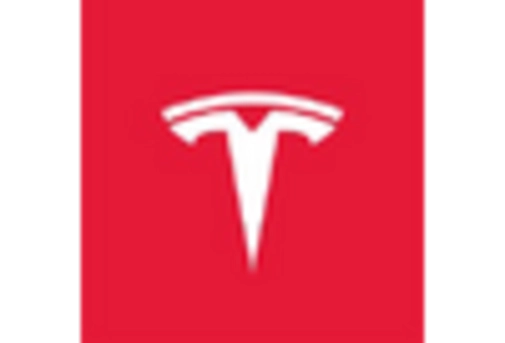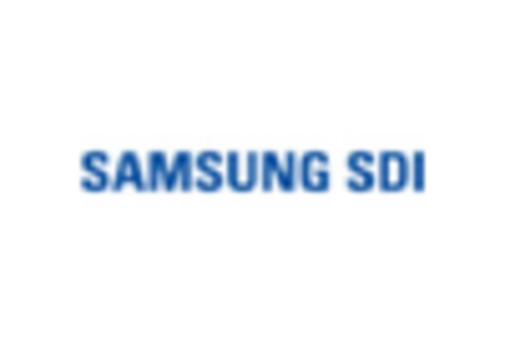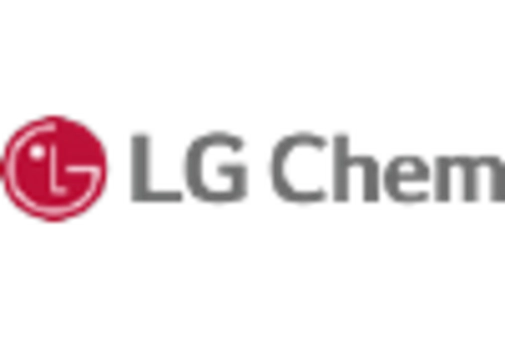The battery material market is currently characterized by intense competition and rapid innovation, driven by the increasing demand for electric vehicles (EVs) and renewable energy storage solutions. Key players such as CATL (CN), LG Chem (KR), and Panasonic (JP) are strategically positioning themselves through technological advancements and partnerships. CATL, for instance, focuses on enhancing battery efficiency and sustainability, while LG Chem emphasizes the development of high-capacity materials. Panasonic, on the other hand, is leveraging its long-standing expertise in battery technology to strengthen its market presence, particularly in the EV sector. Collectively, these strategies contribute to a dynamic competitive environment, where innovation and sustainability are paramount.
In terms of business tactics, companies are increasingly localizing manufacturing to mitigate supply chain disruptions and optimize logistics. This trend is particularly evident in the U.S. market, which appears to be moderately fragmented, with several players vying for market share. The collective influence of major companies shapes the competitive structure, as they engage in strategic collaborations and investments to enhance their operational capabilities and market reach.
In October 2025, LG Chem (KR) announced a partnership with a leading U.S. automaker to develop next-generation battery materials aimed at improving energy density and reducing costs. This collaboration is significant as it not only reinforces LG Chem's commitment to innovation but also positions the company to capitalize on the growing demand for advanced battery technologies in the EV market. Such partnerships are likely to enhance LG Chem's competitive edge and market positioning.
In September 2025, Panasonic (JP) unveiled plans to expand its battery production facility in Nevada, aiming to increase output by 30% over the next two years. This strategic move underscores Panasonic's focus on scaling operations to meet the surging demand for EV batteries. The expansion is expected to bolster Panasonic's supply chain reliability and strengthen its foothold in the North American market, which is critical for future growth.
In August 2025, CATL (CN) launched a new line of sustainable battery materials that utilize recycled components, reflecting a growing trend towards sustainability in the industry. This initiative not only aligns with global environmental goals but also positions CATL as a leader in the sustainable battery materials segment. The introduction of these materials could potentially reshape consumer preferences and drive competition based on sustainability metrics.
As of November 2025, the competitive landscape is increasingly defined by trends such as digitalization, sustainability, and the integration of artificial intelligence (AI) in production processes. Strategic alliances are becoming more prevalent, as companies recognize the need to collaborate to enhance innovation and efficiency. Looking ahead, competitive differentiation is likely to evolve from traditional price-based competition to a focus on technological advancements, supply chain reliability, and sustainable practices. This shift indicates a transformative phase in the battery material market, where companies that prioritize innovation and sustainability may emerge as leaders.





















Leave a Comment